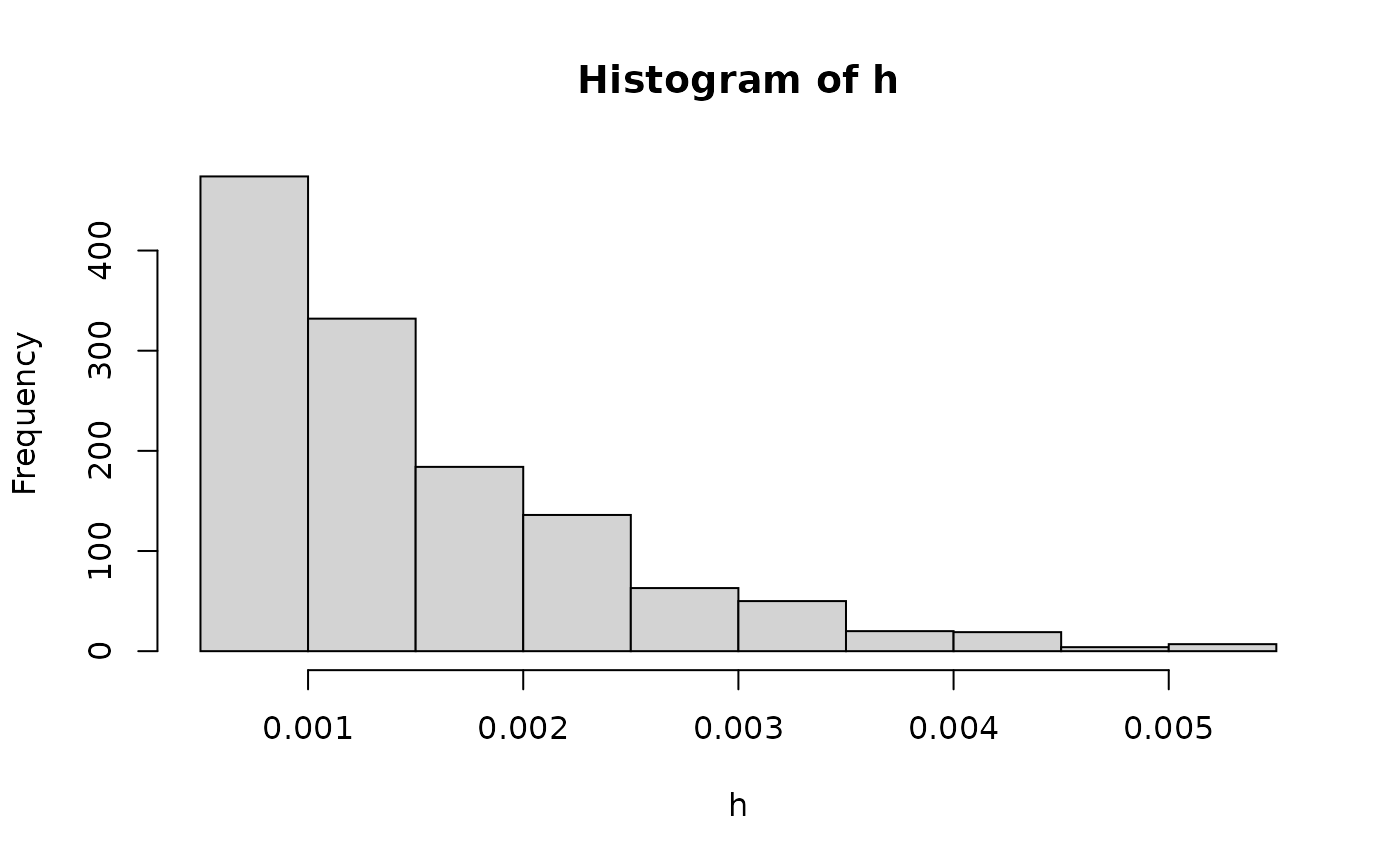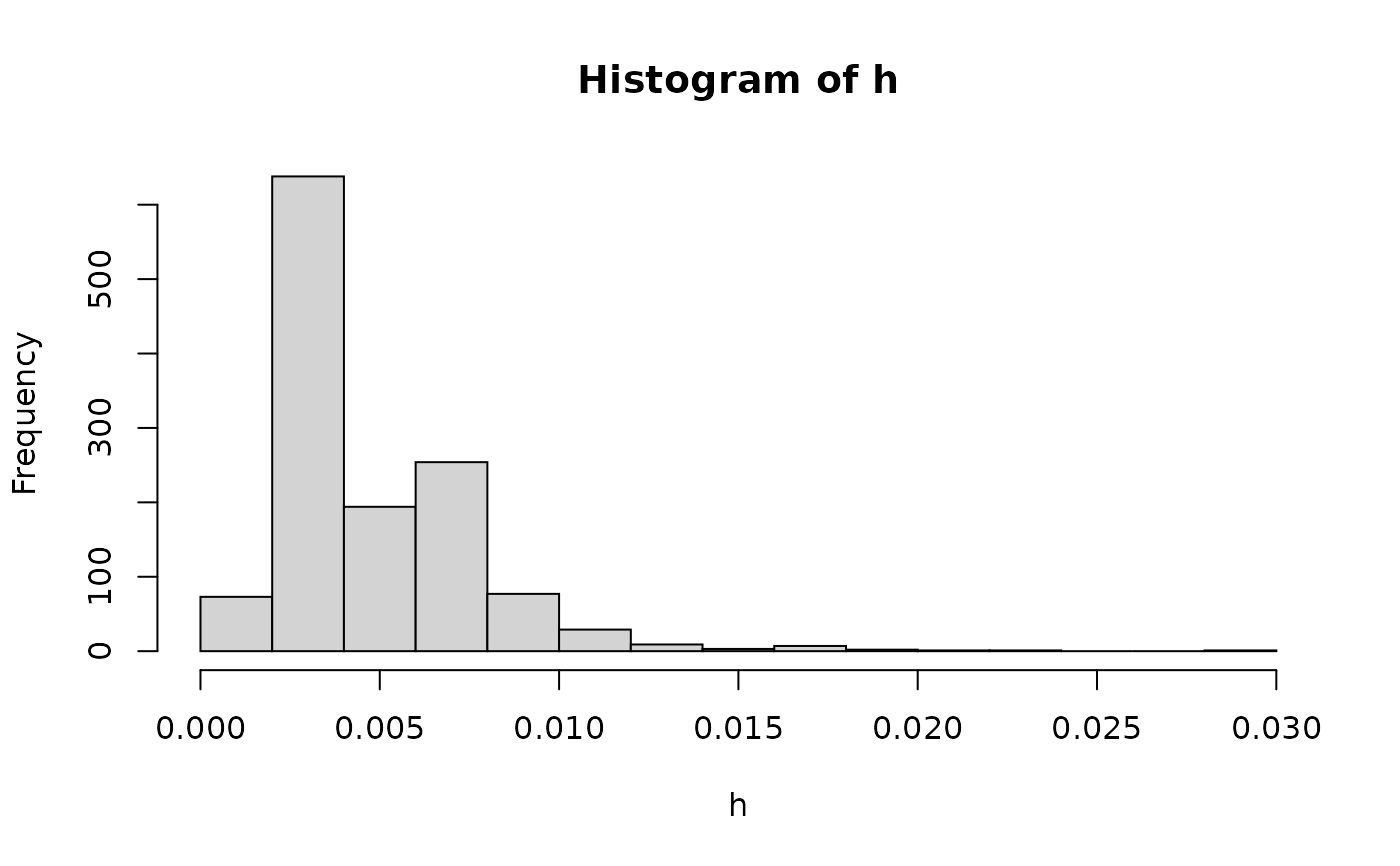Calculates leverage, that is, how far away the regressor values of an observation are from those of the other observations using $$ h_{ii} = x_{i}^{T} \left( \mathbf{X}^{T} \mathbf{X} \right)^{-1} x_{i} $$ where \(x_{i}^{T}\) is the \(i\)th row of the \(\mathbf{X}\) matrix. Note that \( \mathbf{X} \left( \mathbf{X}^{T} \mathbf{X} \right)^{-1} \mathbf{X}^{T} \) is the projection matrix (or hat matrix) \(\mathbf{P}\) and \(h_{ii}\) is the diagonal of \(\mathbf{P}\).
h(X)
Arguments
| X |
|
|---|
Value
Returns leverage.
References
See also
Author
Ivan Jacob Agaloos Pesigan
Examples
# Simple regression------------------------------------------------ X <- jeksterslabRdatarepo::wages.matrix[["X"]] X <- X[, c(1, ncol(X))] h <- h(X = X) hist(h)# Multiple regression---------------------------------------------- X <- jeksterslabRdatarepo::wages.matrix[["X"]] # age is removed X <- X[, -ncol(X)] h <- h(X = X) hist(h)

